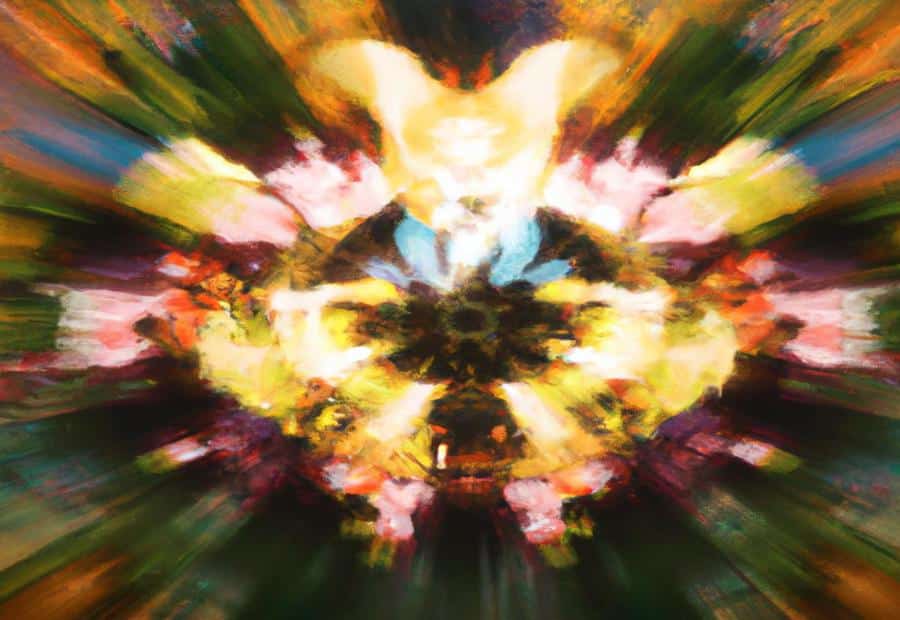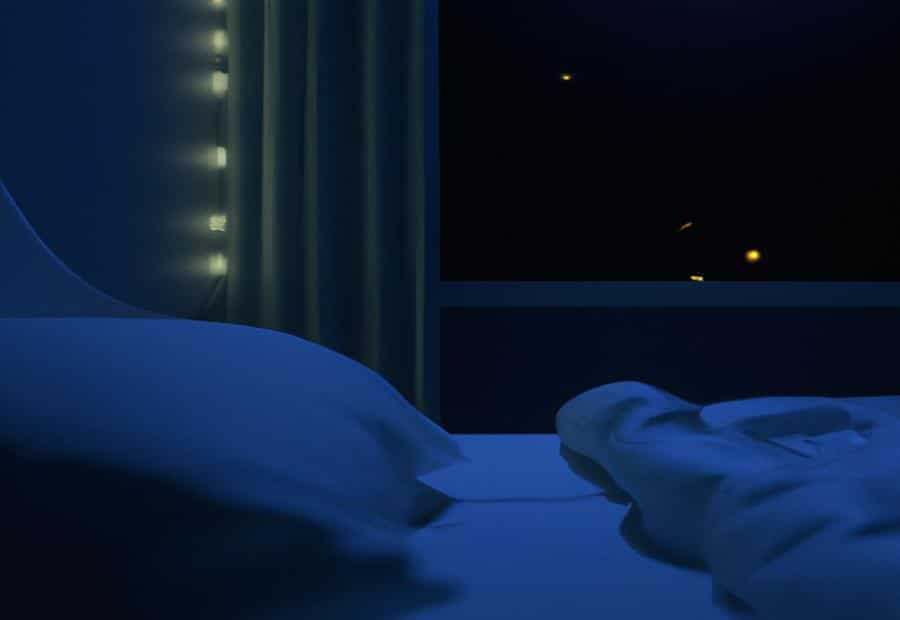Key Takeaways:
- Fever dreams are vivid and intense dreams that occur during episodes of fever. They are often characterized by a disrupted sleep pattern and may be accompanied by emotional and physical symptoms.
- The causes of fever dreams can be attributed to physiological factors, such as changes in brain activity and neurotransmitter levels, as well as psychological factors, including stress and anxiety.
- Medical conditions, such as infections and certain medications, can also contribute to the occurrence of fever dreams.
- Fever dreams often involve fragmented sleep and increased dream recall. They can be associated with emotional and physical symptoms, such as fear, confusion, and increased heart rate.
- The Covid-19 situation has led to an increase in reports of fever dreams, possibly due to the heightened levels of stress and anxiety in the general population.
- Various theories and explanations have been proposed to understand the phenomenon of fever dreams, including psychological theories related to the role of emotions and memories, as well as physiological explanations involving changes in brain function during fever.
- Management and prevention of fever dreams can involve coping strategies, such as improving sleep hygiene and managing stress. In some cases, medical interventions, such as fever-reducing medications, may be recommended.

Fever dreams can be a perplexing and fascinating phenomenon. In this section, we will dive into the definition and explanation of fever dreams, exploring their strange and vivid nature. Additionally, we will uncover the significance and impact of these dreams on individuals, shedding light on their potential effects on sleep quality and overall well-being. Brace yourself for a journey into the mysterious realm of fever dreams.
Definition and Explanation
Fever dreams are intense, bizarre dreams that happen when your body temperature is higher than normal. Why these dreams occur is unknown, but there are several possible causes.
Physiological influences, such as shifts in brain activity and neurotransmitter levels during fever, might trigger these dreams. Stress, anxiety, and distress can also cause fever dreams.
Conditions like influenza, malaria, and COVID-19 are linked to increased fever dream frequency and intensity. The pandemic has put a spotlight on how fever dreams can affect mental health.
Theories about fever dreams include: psychological ideas that the dreams help the brain cope with illness; and physiological theories that fever affects sleep patterns and causes dreams.
To manage and prevent fever dreams, do things like relaxation techniques, calming activities before bed, and have a consistent sleep schedule. Medical treatments like antipyretic and anti-anxiety drugs may also be prescribed.
Significance and Impact
Fever dreams are important and have a great effect on anyone experiencing them. These dreams occur when the body temperature is high, usually due to sickness or infection. They can affect sleep quality, leading to irregular sleep patterns and trouble remembering dreams.
The significance of fever dreams relates to their link to body heat. When the body is fighting off something, the brain’s cooling system might not work correctly, causing fever dreams. This change in the body’s normal functions can cause physical and mental symptoms during the dreams.
Psychological factors can also cause fever dreams. Stress, fear, and other mental conditions can raise the frequency and strength of these dreams. They can make people feel scared, worried, or even terrified when they wake up.
COVID-19 can also make fever dreams more frequent. The stress and worry about the pandemic can affect sleep, leading to intense, clear dreams.
To sum up, fever dreams are more than just a result of high body temperature, they have great importance because of their effect on rest and emotions. Knowing the causes, features, and methods of managing these dreams can help people cope with them.
Causes of Fever Dreams

When it comes to fever dreams, understanding the causes behind them is key. In this section, we’ll dive into the factors that contribute to these vivid and often unsettling experiences. From physiological and psychological influences to various medical conditions, we’ll explore the range of reasons behind why fever dreams occur. So, buckle up and let’s unravel the mystery behind these intriguing nocturnal phenomena.
Physiological Factors
Fever dreams are often due to physiological factors. These can include changes in body temperature, hormonal shifts, and sleep cycle disruptions. The body’s response to fever or illness can result in increased brain activity during REM sleep when dreaming happens. This can lead to vivid and intense dreams associated with fever.
Physiology affects fever dreams. Body temperature fluctuations can impact the brain and dream vividness. Hormonal shifts from fever and illness can affect dream intensity. Sleep cycle disruptions can cause fragmented sleep and increased dream recall.
Other details may influence fever dreams. Susceptibility may be due to genetics or health issues. The severity of the illness or fever can affect dream frequency and intensity. Fever dreams are a common phenomenon during illness or body temperature elevation. What are fever dreams?
Managing fever dreams is possible. Relaxation techniques before bed, a consistent sleep schedule, and consulting a healthcare professional can help reduce occurrence. Don’t worry excessively as these dreams are usually temporary. Address any underlying health issues and adopt coping strategies to minimize their impact.
Psychological Factors
Psychological factors can be key in creating and influencing fever dreams. These factors relate to mental and emotional processes that have an effect on dream content and experiences during periods of high body temperature. Comprehending these psychological aspects can offer precious knowledge about the character of fever dreams and how they affect people.
- Emotions: A major psychological factor is someone’s emotions. Investigation shows that strong feelings, such as fear, worry, or stress, can have an effect on the vividness and intensity of fever dreams.
- Cognitive processes: Another factor is a person’s cognitive processes. Thinking patterns, such as preoccupations or rumination, may shape the topics and contents of fever dreams.
- Past events: Past life events also take part in forming fever dreams. Unresolved emotional matters or traumatic events may resurface during these dreams, affecting their contents and emotional effect.
- Psychological illnesses: Individuals with psychological illnesses, like post-traumatic stress disorder (PTSD) or depression, may be more likely to have intense and distressing fever dreams.
While physical factors interact with psychological ones in the development of fever dreams, understanding the special contributions of psychological ones allows for a thorough exploration of this phenomena. For more information on fever dreams, check out this article on What are fever dreams?
Fever dreams are not only caused by medical or physiological conditions but are drastically formed by many psychological factors. Such factors include an individual’s emotional state, cognitive processes, past experiences, and possible hidden psychological disorders. By taking into account these psychological components in addition to physical explanations, we can have a better understanding of the complexity of fever dreams and their influence on people’s well-being.
Medical Conditions
Medical conditions can have a major impact on fever dreams. Physiological and psychological factors can lead to these dreams, but underlying medical issues can also be involved. From chronic illnesses to acute infections, such as respiratory or urinary tract infections, these conditions can mess up normal sleep patterns and cause intense dream experiences. The presence of a medical condition can make the physical and emotional symptoms of fever dreams more noticeable and distressing.
Certain medications used to treat medical conditions can also influence fever dreams. Drugs like antidepressants or antipsychotics can make dreaming more vivid or increase the intensity of dreams. This suggests that the effects of these medicines can work with brain processes connected to dreaming, causing fever dreams.
It is important to remember that not all medical conditions will directly cause fever dreams. They are more like triggers or modifiers for these experiences. Each person’s reaction to their medical condition and effect on their sleep and dream patterns can be different.
Overall, understanding the relationship between medical conditions and fever dreams can help us in finding causes and managing strategies for people who have these dreams. By addressing underlying health issues and using the right coping methods or interventions, individuals may be able to reduce the occurrence and intensity of fever dreams connected to their medical condition.
Characteristics and Experiences of Fever Dreams

Fever dreams, often filled with vivid and intense experiences, can be truly fascinating. In this section, we will explore the characteristics and experiences associated with these unique dreams. From the connection between dream recall and fragmented sleep to the emotional and physical symptoms that accompany fever dreams, we’ll delve into the intriguing world of fever-induced hallucinations. And, considering the current Covid-19 situation, we’ll also touch upon any relevant insights related to fever dreams.
Dream Recall and Fragmented Sleep
Dream recall is the ability to remember and explain your dreams. Factors like sleep duration, quality, and consciousness level affect it. Fragmented sleep happens when sleep cycles are broken, leading to multiple awakenings. This increases dream recall. During fever dreams, a high body temperature and other illness-related symptoms cause the pattern of fragmented sleep. These dreams feature vivid imagery, strong emotions, and sometimes confusion. Research suggests that neural activity and memory consolidation mechanisms can be disrupted, affecting dream recall.
During the Covid-19 pandemic, infected individuals have reported having fever dreams which represent their worries, like sickness, isolation, and health-related concerns. An individual with a high fever shared his experience of nightmares and terrible dreams which caused him to wake up in cold sweats. This example shows how fever-induced dreams can affect sleep quality and emotional health.
Emotional and Physical Symptoms
Fevered dreams can have a major impact on one’s wellbeing. These can involve strong emotions, like fear, anxiety, sadness or anger – which can be more intense than normal dreams. Sleep cycles can also be disturbed, with waking up during the night. Repetitive, intrusive thoughts may appear and physical sensations, such as sweating, increased heart rate, rapid breathing, and muscle tension, may be present. Hallucinations might also occur. Even after waking up, effects linger, impacting daily functioning.
The severity of symptoms varies. Medical problems, psychological factors, and surrounding circumstances can play a role. Dreams may feature recurring themes or scenarios, or have individual meanings. An individual’s experience can be quite eye-opening. For example, one feverish person recounted nightmares of fear and panic, which stayed with them afterwards. It’s clear that fever dreams can seriously affect one’s wellbeing.
Covid 19 Situation
Fever dreams during the Covid-19 pandemic are becoming more common. Stress and anxiety caused by the virus is changing people’s sleep patterns, resulting in more fever dreams with intense images. Disrupted routines and heightened emotions are also contributing factors.
These dreams are often related to fears about the virus. This can cause fragmented sleep, leading to feelings of exhaustion. Stress hormones, anxiety, and fear can all make the dreams more powerful.
To reduce fever dreams during Covid-19, individuals can use coping strategies. Relaxation before bed, keeping a regular sleep schedule, and activities that reduce stress may all help. Professional medical advice or therapy may also be beneficial for severe symptoms.
Medical interventions such as medication or therapies to treat sleep disorders can improve sleep quality. It is essential to address any underlying conditions that can contribute to fever dreams.
The effects of fever dreams should not be underestimated. They can have a negative impact on wellbeing and mental health. With the right strategies and help, people can manage the intensity of these dreams and improve their sleep.
Theories and Explanations for Fever Dreams

Theories and explanations for fever dreams – a deep dive into the psychological theories and physiological explanations that shed light on the fascinating phenomenon. Unravel the mind’s mysteries and the body’s reactions as we explore the underlying factors behind these vivid and intense dream experiences.
Psychological Theories
Psychological theories can help us understand fever dreams. They explore the psychological influences that lead to fever dreams and what those dreams mean.
Physiological things, like body temperature and brain activity, can affect dream content and make fever dreams vivid and intense.
Plus, mental states like stress and anxiety raise the chances of having a fever dream. These states may cause dreams to be emotionally charged or distressing.
Also, medical conditions like infection or illness can cause fever dreams. Psychological theories say these medical issues can change how the brain functions, leading to altered dream experiences.
In conclusion, psychological theories help us understand fever dreams. Researchers look at both physical and psychological factors to figure out why these dreams happen.
Physiological Explanations
Fever dreams could be explained by physiological factors that affect the brain and sleep. These include changes in body temperature, hormone shifts, and neurotransmitter release. The body’s response to infection or illness can disrupt normal sleep and lead to intense dreams during fevers. Dehydration caused by fever can further influence brain function and contribute to fever dreams.
Brain activity could also explain fever dreams. Areas like the amygdala and hippocampus may be more active. These regions handle emotions and memory, which could explain the heightened emotions and vivid details in fever dreams. Neurochemical activity changes due to fever can also influence dream content.
Fever dreams might be linked to disruptions to REM sleep. REM sleep is usually responsible for dreams. But fever can disturb REM sleep patterns and cause more dream recall after waking. Fragmented sleep can cause more detailed dream experiences during fevers.
Psychological and environmental factors could also play a part in fever dreams. Stress, anxiety, medications taken for illness, or external stimuli related to the illness can influence dream experiences.
Pro Tip: To manage fever dreams, address the fever or illness causing them. Hydrate and create a comfortable sleep environment. Consult a healthcare professional if you have persistent or distressing fever dreams.
Management and Prevention of Fever Dreams

When it comes to managing and preventing fever dreams, there are effective strategies and medical interventions available. From coping mechanisms to medical advancements, this section explores the various approaches to dealing with and minimizing the occurrence of fever dreams. Whether you’re seeking practical techniques or professional interventions, we’ll delve into the options that can help navigate the complex world of fever dreams.
Coping Strategies
Managing fever dreams involves various coping strategies. These aim to reduce distress and provide a sense of control and well-being.
- Relaxation techniques: Deep breathing, progressive muscle relaxation, or guided imagery can calm the mind and promote tranquility during fever dreams.
- Regular sleep routine: Going to bed and waking up at the same time each day helps regulate the body’s clock.
- Conducive sleep environment: Keeping the room comfortable, quiet, and dark can minimize triggers and disturbances.
- Stress reduction: Exercise, meditation, or hobbies can help manage stress.
- Seek support: Talking to trusted people can provide emotional support and validate feelings.
- Consult a professional: If fever dreams persist, seek help from a healthcare provider or mental health specialist.
Understanding that others have gone through similar experiences can give a sense of community.
Medical Interventions
Different medical interventions might help manage and prevent fever dreams. These include:
- Prescribing antipyretics to reduce fever.
- Using cognitive-behavioral therapy (CBT) to address psychological factors.
- Practicing good sleep hygiene.
- Regulating body temperature with fans or bedding layers.
- Treating underlying medical conditions.
However, each person’s experience is different. So, healthcare providers need to customize interventions for individual needs.
Conclusion

Fever dreams can be puzzling and disorienting. They often feature vivid and unsettling imagery, leading to feelings of anxiety. It’s important to realize that these dreams are just a result of a high body temperature and are not a sign of any underlying physical or psychological problems.
Though they can be alarming, fever dreams usually disappear as the body temperature returns to normal. External factors such as medications or substances that impact brain function can also influence fever dreams. For instance, some anti-malaria drugs may cause vivid and crazy dreams.
The content and intensity of fever dreams differs from person to person. This shows how personal factors affect dreams. Fever dreams remind us of the complexity of the human mind and its response to physical changes.
In summary, fever dreams are interesting and unique. They appear during illnesses and are usually accompanied by vivid hallucinations. The intensity of these dreams depends on the illness and individual susceptibility. They usually occur in the REM stage of sleep, which is linked to vivid and memorable dreams. Fever dreams can leave a lasting impression, but it’s important to remember that they’re caused by high body temperature and are generally harmless.
Some Facts About Fever Dreams:
- ✅ Fever dreams are intense and vivid dreams that occur when a person has a high fever. (Source: Healthline)
- ✅ Fever dreams are often negative and emotionally intense, with 94% of reported dreams being negative. (Source: Puffy)
- ✅ Fever dreams occur during the rapid eye movement (REM) stage of the sleep cycle, which is when most dreams occur. (Source: Puffy)
- ✅ Fever dreams are characterized by bizarre and unsettling imagery, such as creatures with oversized limbs and spreading darkness. (Source: Team Research)
- ✅ The exact cause of fever dreams is unknown, but it is believed that the elevated brain temperatures during a fever disrupt normal cognitive processes, leading to unusual dreams. (Source: Health.com)
FAQs about What Are Fever Dreams?
Fever dreams are vivid and intense dreams that occur when a person has a high body temperature, typically above 99°F. These dreams can be disturbing, bizarre, and emotionally intense, often characterized by negative themes and unusual imagery.
The exact cause of fever dreams is not fully understood. However, research suggests that the elevated brain temperatures during a fever may disrupt normal cognitive processes, leading to the occurrence of unusual and unpleasant dreams. Additionally, fever dreams may be triggered by the body’s response to fighting infections or other health conditions.
Fever dreams differ from normal dreams in several ways. They are often more vivid, negative, and emotionally intense. Fever dreams also tend to involve spatial distortion, threats or danger, and a decrease in social interactions compared to regular dreams. These unique characteristics make them stand out as a distinct phenomenon.
Fever dreams are not specific to any particular health condition. They can occur with any fever, including those caused by viral infections, inflammatory conditions like rheumatoid arthritis, or other factors that elevate body temperature. The content and themes of fever dreams may differ depending on the underlying illness.
Preventing fever dreams can be challenging, as they are primarily associated with elevated body temperatures. However, taking care of overall health, such as getting plenty of rest, staying hydrated, and taking recommended medications, may help promote a peaceful night’s sleep and potentially reduce the occurrence of fever dreams.
Fever dreams are typically not a cause for immediate medical concern on their own. However, if fever symptoms persist or worsen, or if they are accompanied by severe respiratory symptoms, difficulty breathing, or other concerning signs, it is important to seek medical advice. The healthcare provider can evaluate the underlying condition and provide appropriate guidance.

